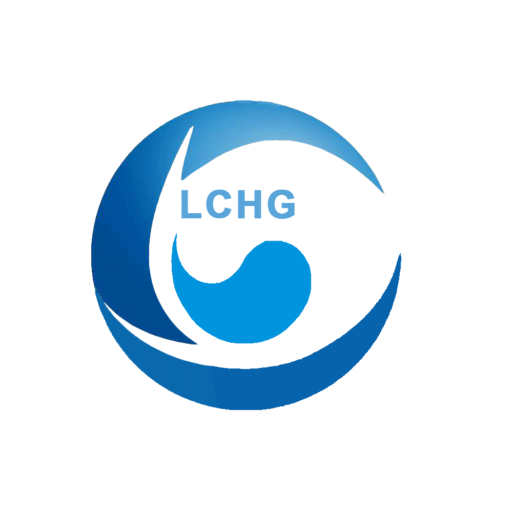丙烯酸酯废水处理工艺
丙烯酸酯行业有着非常广阔的发展前景,同时带来的环保问题也不容忽视,丙烯酸酯废水处理工艺是不可避免的关注点。下面力源环保带您了解此类工业废水的处理方法。
丙烯酸酯废水主要含有醋酸、甲基丙烯酸、丙烯酸、甲醛、乙醛、甲基磺酸和一些芳香族化合物等有机物,其化学需氧量(COD)高达数万数十万mg/L,属于高浓度有机废水,具有浓度高、成分复杂、有毒有害等特点,呈强酸性,具有一定的腐蚀性。
目前,国内外常用的丙烯酸酯废水处理方法有以下几种:
(1)生物处理法,即采用各种厌氧、好氧工艺或组合工艺来处理此类废水,对于BOD/COD较低、不易生化的废水,可加入一些易生化的有机物或污水进行混合稀释处理。
(2)深度氧化法,通过各种方法产生羟基自由基与有机物反应,直接将有机物氧化为 CO2、H2O 等物质,或作为生化处理的预处理手段,将不可生物降解的有机物氧化分解为易生物降解的有机物,改善废水的生化性,此类技术有:铁碳微电解技术、芬顿试剂氧化技术、光催化氧化技术、湿式氧化技术等。这些技术包括:铁碳微电解技术、芬顿试剂氧化技术、光催化氧化技术、湿式氧化技术等。
(3)物化法,包括混凝、沉淀预处理,利用蒸发、干燥、结晶等方法将丙烯酸酯废水中的污染物与水分离,达到废水净化的目的。
在应用丙烯酸酯处理废水的过程中,往往会结合多种技术,进行综合处理,实现对废水的有效处理。
丙烯酸是一种重要的化工原料,随着经济的发展,促进了整个行业的发展,在发展的过程中会带来大量的污水,为了避免对环境造成破坏,需要采用相应的丙烯酸行业污水处理方法进行处理后达标排放。下面力源环保带您了解丙烯酸行业污水处理。
丙烯酸工业废水中含有醋酸、甲基丙烯酸、丙烯酸、甲醛、乙醛等有机物,其化学需氧量(CODcr)高达几万至十几万mg/L,呈强酸性,属于高浓度有机废水,具有浓度高、成分复杂、有毒有害等特点,传统方法处理难度较大。
目前,丙烯酸工业废水的处理方法主要有生化法、催化湿式氧化法和焚烧法。由于污水中含有对微生物有毒的物质,且缺乏营养物质,直接采用生化法处理这类废水,特别是对高浓度的丙烯酸废水效果不好。催化湿式氧化法不能完全降解丙烯酸生产废水中的有机物,存在催化剂失效和二次污染的问题,反应后的水仍需进一步处理,增加了处理成本。焚烧法存在成本高、一次性投资大等问题,难以在工业上推广。
为了解决上述问题,丙烯酸行业废水采用电催化氧化法处理,出水进入综合调节池调节水质、水量和pH值,综合调节池出水进入脉冲厌氧反应池,经过厌氧处理后,脉冲厌氧反应池出水进入接触氧化池进行好氧处理,处理后的废水进入二沉池进行泥水分离,即可达标排放。
这种丙烯酸工业废水处理方法通过在厌氧生化处理前加装电加氢氧化装置,并以脉冲厌氧反应器代替传统的厌氧反应池,处理工艺简单,处理量大,处理效率得到了极大的提高。
丙烯酸废气源特性
丙烯酸废气主要来自丙烯酸及其衍生物的生产和使用。这些废气通常含有挥发性有机化合物(VOC),如丙烯酸单体、丙烯酸甲酯、丙烯酸乙酯等。丙烯酸废气的主要特点包括
成分复杂:废气中可能含有多种丙烯酸及其衍生物,它们具有不同的化学性质和毒性。
浓度波动:由于生产活动的变化,废气中丙烯酸及其衍生物的浓度也会波动,增加处理难度。
有害:丙烯酸及其衍生物可能对人类健康和环境有害,因此必须严格控制其排放。
丙烯酸废气处理工艺
丙烯酸废气处理工艺通常包括以下步骤:
废气收集:通过管道和集气罩等设施收集生产过程中产生的丙烯酸废气,防止其直接排放到大气中。
预处理:对收集的废气进行预处理,如除尘、除雾等,以去除废气中的固体颗粒和液滴,为后续处理提供有利条件。
吸附处理:利用活性炭等吸附剂吸附废气中的丙烯酸物质,净化废气。活性炭具有较高的比表面积和优异的吸附性能,可有效去除废气中的挥发性有机化合物。
催化氧化:在特定催化剂的作用下,废气中的 VOCs 在较低的点火温度下进行无焰氧化燃烧,氧化分解成 CO2 和 H2O,并释放出大量热能。催化氧化技术具有处理效率高、能耗低等优点,是处理丙烯酸废气的有效方法。
丙烯酸废气处理箱
下面是一个丙烯酸废气处理案例:
案例背景:某化工厂在生产丙烯酸树脂的过程中会产生大量丙烯酸废气,这些废气直接排放到大气中会对环境和人体健康造成严重影响。为了解决这一问题,该化工厂采用了活性炭吸附+催化氧化的废气处理工艺。
治疗过程:
废气收集:生产过程中产生的丙烯酸废气通过高效的空气收集系统进行全面收集。
预处理:对收集的废气进行除尘和除雾处理,以去除固体颗粒和液滴。
活性炭吸附:预处理后的废气被送入活性炭吸附塔进行吸附处理。活性炭吸附塔内装有高比表面积的活性炭吸附剂,可有效吸附废气中的丙烯酸类物质。
催化氧化:当活性炭吸附饱和后,用热空气或蒸汽进行解吸,使吸附在活性炭上的丙烯酸物质解吸。解吸后的高浓度有机废气被送入催化氧化装置进行催化氧化处理。在催化剂的作用下,VOCs 在较低温度下进行无焰氧化燃烧,氧化分解成 CO2 和 H2O。
尾气排放:催化氧化处理后的尾气经冷却和过滤后排入大气。此时,尾气中的丙烯酸类物质已基本去除干净,符合环保排放要求。
通过采用活性炭吸附+催化氧化的废气处理工艺,化工厂成功解决了丙烯酸废气排放问题,为环境保护做出了积极贡献。
| 聚硫醇/聚硫醇 | ||
| DMES 单体 | 双(2-巯基乙基)硫醚 | 3570-55-6 |
| DMPT 单体 | THIOCURE DMPT | 131538-00-6 |
| PETMP 单体 | 季戊四醇四(3-巯基丙酸酯) | 7575-23-7 |
| PM839 单体 | 聚氧(甲基-1,2-乙二基) | 72244-98-5 |
| 单官能团单体 | ||
| HEMA 单体 | 甲基丙烯酸 2-羟乙基酯 | 868-77-9 |
| HPMA 单体 | 甲基丙烯酸羟丙酯 | 27813-02-1 |
| THFA 单体 | 丙烯酸四氢糠酯 | 2399-48-6 |
| HDCPA 单体 | 氢化双环戊烯丙烯酸酯 | 79637-74-4 |
| DCPMA 单体 | 甲基丙烯酸二氢双环戊二烯酯 | 30798-39-1 |
| DCPA 单体 | 丙烯酸二氢双环戊二烯酯 | 12542-30-2 |
| 二氯丙烯酰亚胺单体 | 甲基丙烯酸二环戊氧基乙酯 | 68586-19-6 |
| DCPEOA 单体 | 丙烯酸二环戊烯基氧基乙基酯 | 65983-31-5 |
| NP-4EA 单体 | (4) 乙氧基化壬基酚 | 50974-47-5 |
| LA 单体 | 丙烯酸十二烷基酯/丙烯酸十二烷基酯 | 2156-97-0 |
| THFMA 单体 | 甲基丙烯酸四氢糠酯 | 2455-24-5 |
| PHEA 单体 | 2-苯氧基乙基丙烯酸酯 | 48145-04-6 |
| LMA 单体 | 甲基丙烯酸月桂酯 | 142-90-5 |
| IDA 单体 | 丙烯酸异癸酯 | 1330-61-6 |
| IBOMA 单体 | 甲基丙烯酸异冰片酯 | 7534-94-3 |
| IBOA 单体 | 丙烯酸异冰片酯 | 5888-33-5 |
| EOEOEA 单体 | 2-(2-乙氧基乙氧基)丙烯酸乙酯 | 7328-17-8 |
| 多功能单体 | ||
| DPHA 单体 | 双季戊四醇六丙烯酸酯 | 29570-58-9 |
| DI-TMPTA 单体 | 二(三羟甲基丙烷)四丙烯酸酯 | 94108-97-1 |
| 丙烯酰胺单体 | ||
| ACMO 单体 | 4-丙烯酰基吗啉 | 5117-12-4 |
| 双功能单体 | ||
| PEGDMA 单体 | 聚乙二醇二甲基丙烯酸酯 | 25852-47-5 |
| TPGDA 单体 | 三丙二醇二丙烯酸酯 | 42978-66-5 |
| TEGDMA 单体 | 三乙二醇二甲基丙烯酸酯 | 109-16-0 |
| PO2-NPGDA 单体 | 丙氧基新戊二醇二丙烯酸酯 | 84170-74-1 |
| PEGDA 单体 | 聚乙二醇二丙烯酸酯 | 26570-48-9 |
| PDDA 单体 | 邻苯二甲酸二乙二醇二丙烯酸酯 | |
| NPGDA 单体 | 新戊二醇二丙烯酸酯 | 2223-82-7 |
| HDDA 单体 | 二丙烯酸六亚甲基酯 | 13048-33-4 |
| EO4-BPADA 单体 | 乙氧基化 (4) 双酚 A 二丙烯酸酯 | 64401-02-1 |
| EO10-BPADA 单体 | 乙氧基化 (10) 双酚 A 二丙烯酸酯 | 64401-02-1 |
| EGDMA 单体 | 乙二醇二甲基丙烯酸酯 | 97-90-5 |
| DPGDA 单体 | 二丙二醇二烯酸酯 | 57472-68-1 |
| 双-GMA 单体 | 双酚 A 甲基丙烯酸缩水甘油酯 | 1565-94-2 |
| 三官能单体 | ||
| TMPTMA 单体 | 三羟甲基丙烷三甲基丙烯酸酯 | 3290-92-4 |
| TMPTA 单体 | 三羟甲基丙烷三丙烯酸酯 | 15625-89-5 |
| PETA 单体 | 季戊四醇三丙烯酸酯 | 3524-68-3 |
| GPTA ( G3POTA ) 单体 | 丙氧基三丙烯酸甘油酯 | 52408-84-1 |
| EO3-TMPTA 单体 | 三羟甲基丙烷三丙烯酸乙氧基化物 | 28961-43-5 |
| 光阻单体 | ||
| IPAMA 单体 | 2-异丙基-2-金刚烷基甲基丙烯酸酯 | 297156-50-4 |
| ECPMA 单体 | 1-乙基环戊基甲基丙烯酸酯 | 266308-58-1 |
| ADAMA 单体 | 1-金刚烷基甲基丙烯酸酯 | 16887-36-8 |
| 甲基丙烯酸酯单体 | ||
| TBAEMA 单体 | 2-(叔丁基氨基)乙基甲基丙烯酸酯 | 3775-90-4 |
| NBMA 单体 | 甲基丙烯酸正丁酯 | 97-88-1 |
| MEMA 单体 | 甲基丙烯酸 2-甲氧基乙酯 | 6976-93-8 |
| i-BMA 单体 | 甲基丙烯酸异丁酯 | 97-86-9 |
| EHMA 单体 | 甲基丙烯酸 2-乙基己酯 | 688-84-6 |
| EGDMP 单体 | 乙二醇双(3-巯基丙酸酯) | 22504-50-3 |
| EEMA 单体 | 2-甲基丙-2-烯酸 2-乙氧基乙酯 | 2370-63-0 |
| DMAEMA 单体 | 甲基丙烯酸 N,M-二甲基氨基乙酯 | 2867-47-2 |
| DEAM 单体 | 甲基丙烯酸二乙氨基乙酯 | 105-16-8 |
| CHMA 单体 | 甲基丙烯酸环己基酯 | 101-43-9 |
| BZMA 单体 | 甲基丙烯酸苄酯 | 2495-37-6 |
| BDDMP 单体 | 1,4-丁二醇二(3-巯基丙酸酯) | 92140-97-1 |
| BDDMA 单体 | 1,4-丁二醇二甲基丙烯酸酯 | 2082-81-7 |
| AMA 单体 | 甲基丙烯酸烯丙酯 | 96-05-9 |
| AAEM 单体 | 甲基丙烯酸乙酰乙酰氧基乙基酯 | 21282-97-3 |
| 丙烯酸酯单体 | ||
| IBA 单体 | 丙烯酸异丁酯 | 106-63-8 |
| EMA 单体 | 甲基丙烯酸乙酯 | 97-63-2 |
| DMAEA 单体 | 丙烯酸二甲胺基乙酯 | 2439-35-2 |
| DEAEA 单体 | 2-(二乙基氨基)乙基丙-2-烯酸酯 | 2426-54-2 |
| CHA 单体 | 丙-2-烯酸环己基酯 | 3066-71-5 |
| BZA 单体 | 丙-2-烯酸苄酯 | 2495-35-4 |
